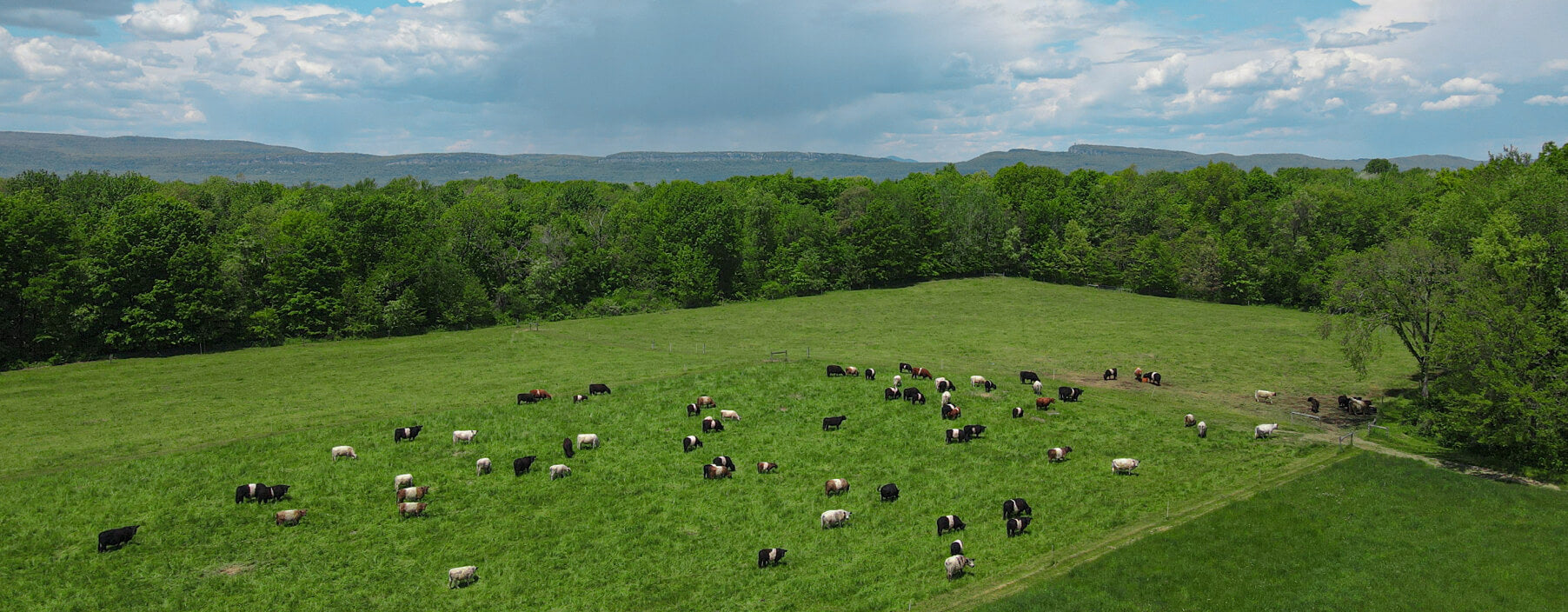
What Is Rotational Grazing
When you talk to Karl Family Farms' head farmer (Kris Karl) about his farming method, referred to as "rotational grazing," you can tell it's something he's passionate about.
"I love meat but I'm also concerned about climate change and the humane treatment of animals, so I wanted to create a farming system that would benefit both," he says.
Rotational grazing refers to the practice of fencing off your land so animals can only feed on one pasture or paddock at a time. This gives the fields not in use time to replenish naturally, so they can be ready with fresh grass for the next cycle.
Other types of grazing leave pastures continually exploited, resulting in the need for human care like adding fertilizers and mechanically aerating the soil.
Environmental Benefits of Rotational Grazing
Grazing animals in a rotational cycle brings a number of benefits to the environment and lives of the animals, which is why the Karls built their family farm around it.
As Farmer Kris says, "one way to think about it is that rotational grazing is the solar power of livestock management."
Let's reflect on that a little more.
Reduced Carbon Footprint
According to the Journal of Production, rotational grazing can reduce carbon emissions on a farm by a whopping 35%!
There are two ways it works:
- Reducing manmade energy
- Sequestering carbon in the ground
First, rotational grazing employs mother nature to do most of the work. In fact, the only manmade energy used is the production and installation of fences needed to control the flow. No additional feed is employed, no outside fertilizers are used, parasite management occurs naturally, and the Karl's even conserve gas because machines are not needed to condition the land.
Second, it keeps carbon in the ground and out of the air - soil is filled with carbon. When livestock are permitted to graze down to the dirt, it gets released into the atmosphere. Pastures that are properly rotated never get consumed to the ground, keeping the carbon where it should be - in the dirt.
Reduced Erosion and Runoff
Rotational grazing also muscles up the soil, preventing erosion and agricultural runoff.
Keeping pastures naturally covered in a carpet of grass strengthens the structure of the land. The flora grow ever deeper roots, holding the topsoil together and reducing deterioration over time.
It also stops nutrients needed to feed the grass, such as phosphorous, nitrogen and potassium (found naturally in manure), from leaking into nearby streams or water supplies where they can be harmful. Everything stays within the feeding cycle of the air, sun, rain and animal.
Rotational Grazing Is Better for the Animals
Animals also benefit from revolved grazing. They eat the best grass and always have it fresh.
A Natural and Healthy Diet
When animals cycle through pastures, there's a generous supply of diverse grasses which provide greater nutritional benefit.
When livestock are not moved throughout the pasture, they tend to overexploit certain grasses and leave others. Eventually it depletes the biodiversity of their diet and can necessitate the inclusion of supplemental feeds.
With rotational grazing, farmers are able to control, almost down to the inch, how much grass gets eaten. They can manage the land in a way that lets nature recover on its own so it can supply an abundance of nutrients for many years to come.
Higher Quality Food
When done right, rotational grazing gives the cattle the best quality food all of the time. With a vigorous rooting system and plenty of time to grow strong, the grass is always in its most optimal state. It's like having a Top Chef cook you a delicious healthy meal every day of your life.
Rotational Grazing at Karl Family Farms
Rotational grazing can take many different forms depending on the kinds of animals and the quality of land. "I was really excited to set up our system," says Farmer Kris, "our animals are free to roam, and rarely bothered by loud machines, and all the animals work together."
Our Rotation Cycles Every Day
The animals start each day with fresh ground and new land.
Plenty of Space
Each of our spaces is broken out into several acres, so there's always room for the animals to roam as they please.
Cattle, Sheep, and Chickens
On a multispecies farm like Karl Family Farms, each animal has its role.
- Cattle - the cattle eat first since they enjoy the tops of the grass
- Sheep - the sheep come next and chew the blades down even further
- Chicken - the chickens come last and they get moved out before eating too much
What About in Winter?
Winter in the Hudson Valley is too cold for grass to grow. A portion of the land is kept open to the animals so they can still graze, but most pastures are given a rest. During this time, the animals are fed local hay made from the same grass they dine on when the days are longer and warmer.
Rotational Grazing and Grass-Fed Beef Jerky
Sustainable farming practices like rotational grazing are an important part of great tasting beef jerky. Not only is it good for the environment and the wellbeing of the animal, but it produces a rich, natural flavor that can't be imitated.